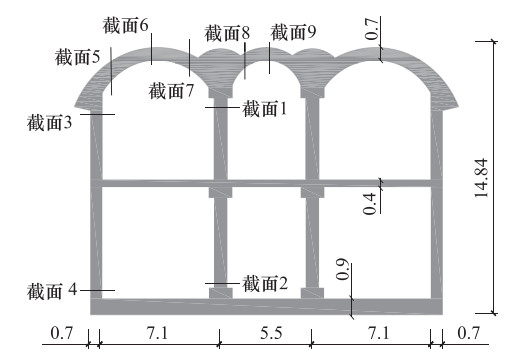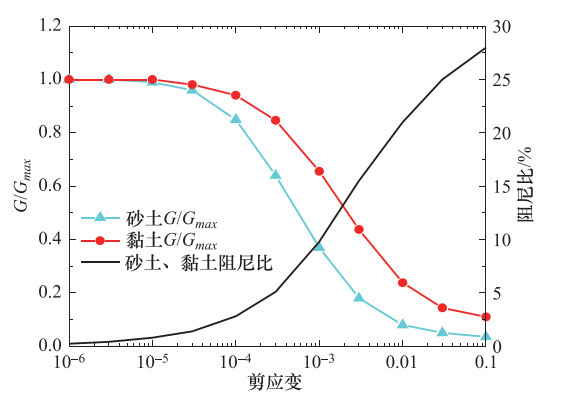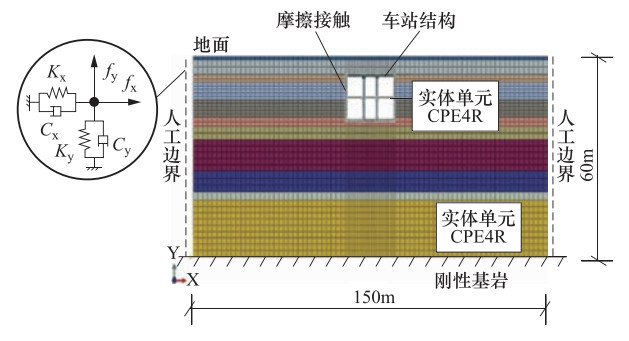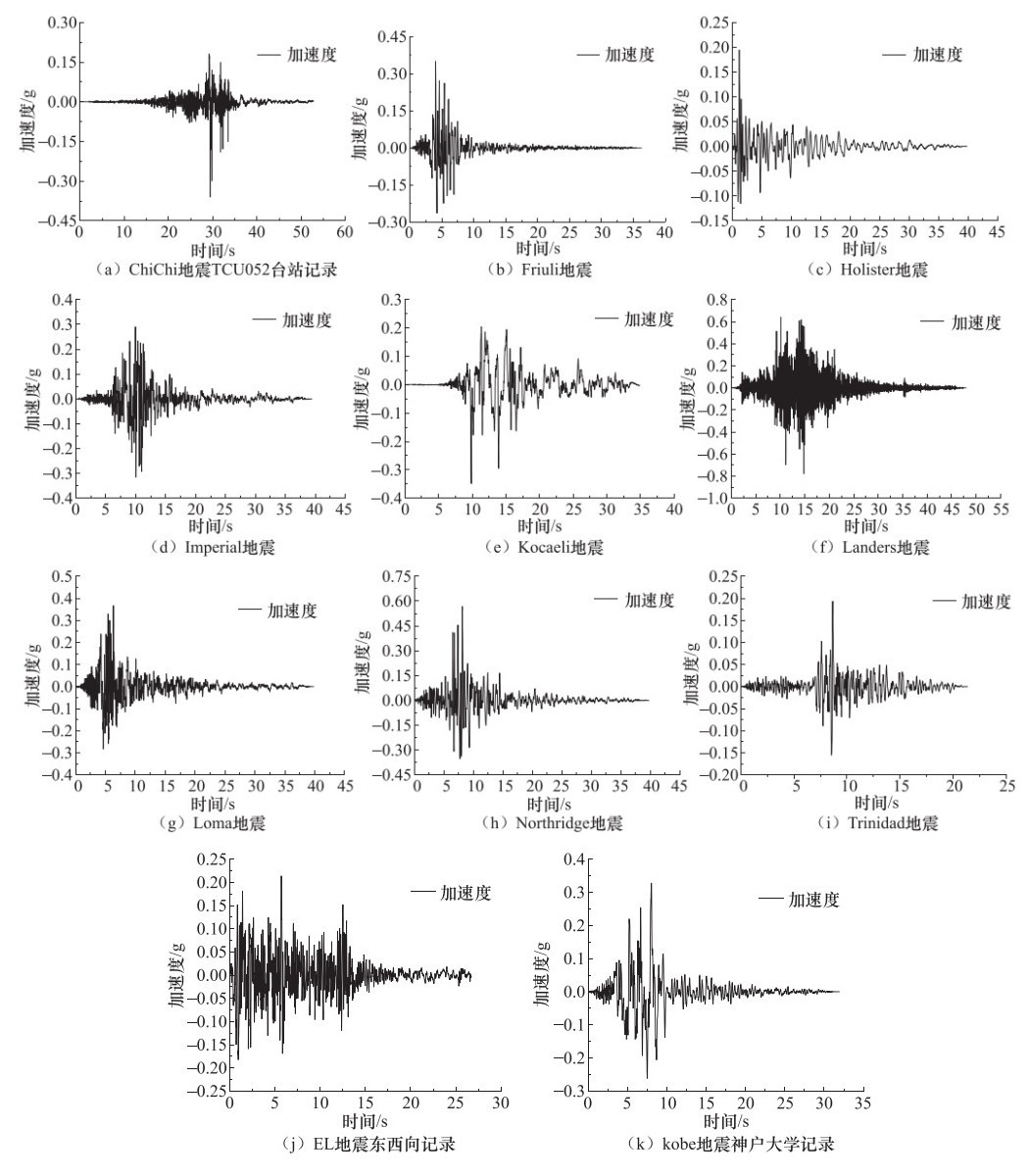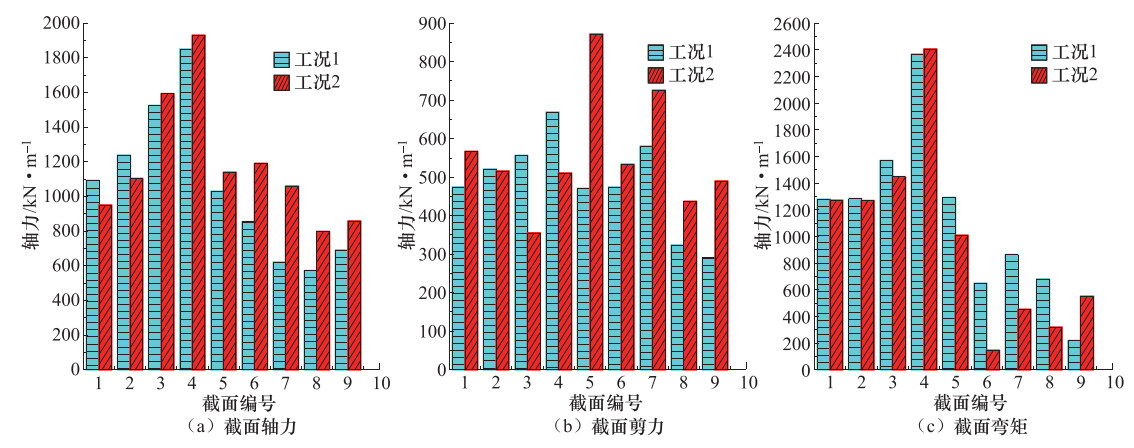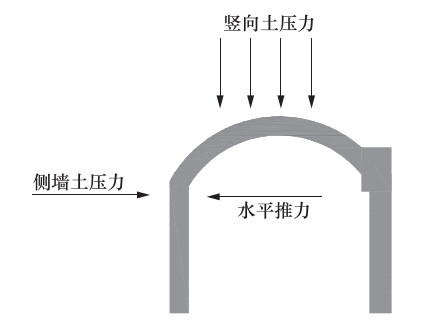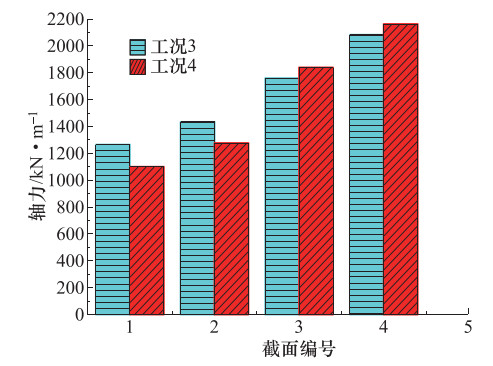Comparative Study on Seismic Responses of Arch and Rectangular Cross-section Subway Stations
-
摘要: 采用动力时程法开展了拱形与矩形断面地铁车站结构地震反应的研究,分析了拱形断面和矩形断面地铁车站结构的关键截面在地震作用下的内力及变形的差异。结果表明:相比于矩形断面车站结构,拱形断面车站结构顶板边缘处和侧墙顶端的弯矩明显减小,车站侧墙顶端和顶板边缘处因承受弯矩过大而发生破坏的可能降低;内柱截面的轴压比明显减小,且与侧墙的轴压比差异显著减小,受力分配更为合理;拱形车站结构顶、底板的相对位移、内柱和侧墙的位移角相对较小。在已模拟的工况下拱形车站内力分布形式更为合理,水平变形相对较小,更有利于抗震。Abstract: The dynamic time history method is used to study the seismic responses of arch and rectangular cross-section subway station structures, the difference of internal force and deformation between the key sections of arch and rectangular cross-section subway stations under seismic action is analyzed. The results show that the bending moment at the edge of the roof and the top of the side wall of the arch cross-section stations decreases significantly, and the possibility of damage at those parts decreases due to the excessive bending moment compared with rectangular cross-section stations. The axial compression ratio of the inner column of arch cross-section station decreases greatly, and the difference between the axial compression ratio of side wall decreases significantly too with reasonable force distribution. Relative displacement between roof and floor, displacement angle of inner column and side wall of arch station are relatively smaller. Under the simulated conditions, the internal force distribution of arch station is more reasonable, with the relatively smaller horizontal deformation, which is of relatively strong earthquake resistance.
-
Key words:
- Subway station structure /
- Arch section /
- Earthquake response
-
表 1 土层参数
Table 1. Soil layer parameters
序号 土层 厚度/m 密度/kg·m-3 泊松比 剪切波速/m·s-1 1 杂填土 1.0 1860 0.38 136 2 粉质黏土 4.6 1950 0.37 138 3 粉质黏土 2.2 1930 0.36 146 4 粉砂夹粉土 5.2 1890 0.35 170 5 粉砂夹粉土 5.2 1910 0.34 200 6 粉质黏土 2.8 1960 0.36 202 7 粉质黏土 4.0 1900 0.37 217 8 粉质黏土 9.4 1910 0.38 246 9 粉质黏土 6.1 1950 0.35 273 10 粉土夹粉砂 2.5 1900 0.37 289 11 粉砂 17.0 1880 0.35 331 表 2 模拟工况
Table 2. Details of simulation cases
工况 断面形式 地震动 1 矩形 水平向 2 拱形 水平向 3 矩形 水平向+竖向 4 拱形 水平向+竖向 表 3 拱形与矩形断车站面内力峰值对比
Table 3. Comparison of peak internal force of arch with rectangular section
断面类型 轴力/kN·m-1 剪力/kN·m-1 弯矩/kN·m·m-1 矩形 拱形 矩形 拱形 矩形 拱形 截面1 1090.7 950.3 474.5 566.7 1278.3 1271.0 截面2 1237.6 1102.5 521.1 515.8 1283.1 1267.9 截面3 1524.3 1592.3 556.3 355.1 1568.5 1447.1 截面4 1849.5 1929.5 668.8 510.3 2367.4 2405.4 截面5 1028.7 1138.9 470.6 871.3 1291.1 1007.6 截面6 853.6 1189.6 474.0 533.1 648.1 144.2 截面7 619.9 1058.8 580.0 725.3 862.8 452.6 截面8 571.7 796.9 323.6 436.7 680.0 317.6 截面9 690.2 857.6 290.0 489.9 218.6 549.4 表 4 竖向构件轴压比
Table 4. Axial compression ratio of vertical components
轴压比 矩形断面 拱形断面 工况1 工况2 内柱 0.413 0.360 侧墙 0.114 0.118 差值 0.298 0.242 表 5 位移角
Table 5. Displacement angle
位移角 矩形断面 拱形断面 工况1 工况2 内柱 0.00873 0.00863 侧墙 0.00779 0.00767 顶底板 0.00717 0.00646 表 6 拱形与矩形断车站面内力峰值对比
Table 6. Comparison of peak internal force of arch with rectangular section
断面类型 轴力/kN·m-1 剪力/kN·m-1 弯矩/kN·m·m-1 矩形 拱形 矩形 拱形 矩形 拱形 截面1 1264.5 1099.4 482.6 577.5 1303.2 1298.8 截面2 1433.7 1276.4 524.5 518.5 1293.4 1278.1 截面3 1759.8 1839.3 579.9 345.6 1585.8 1491.2 截面4 2082.3 2162.7 649.3 491.3 2455.4 2503.7 截面5 1118.2 1244.7 551.9 990.8 1343.7 1044.6 截面6 973.3 1271.4 490.4 550.5 680.9 166.9 截面7 723.4 1124.6 621.1 777.4 906.7 470.1 截面8 676.6 867.1 336.6 451.6 668.2 322.8 截面9 816.2 956.3 290.2 490.0 259.1 615.2 表 7 拱形与矩形断面β
Table 7. β of arch and rectangular section
断面类型 轴力放大系数/% 剪力放大系数/% 弯矩放大系数/% 矩形 拱形 矩形 拱形 矩形 拱形 截面1 15.93 15.69 1.72 1.91 1.95 2.19 截面2 15.84 15.77 0.65 0.53 0.80 0.80 截面3 15.45 15.51 4.25 -2.67 1.10 3.05 截面4 12.58 12.08 -2.91 -3.72 3.72 4.09 截面5 8.70 9.29 17.26 13.72 4.08 3.68 截面6 14.01 6.87 3.45 3.27 5.06 15.73 截面7 16.68 6.21 7.08 7.18 5.09 3.86 截面8 18.35 8.81 4.01 3.41 -1.72 1.64 截面9 18.26 11.51 0.07 0.02 18.54 11.97 表 8 各工况轴压比
Table 8. Axial compression ratio under working conditions
轴压比 矩形断面 拱形断面 工况1 工况3 工况2 工况4 内柱 0.413 0.479 0.360 0.417 侧墙 0.114 0.132 0.118 0.138 差值 0.298 0.347 0.242 0.280 表 9 位移角
Table 9. Displacement angle
位移角 矩形断面 拱形断面 工况1 工况3 工况2 工况4 内柱 0.00873 0.00877 0.00863 0.00869 侧墙 0.00779 0.00783 0.00767 0.00771 顶底板 0.00717 0.00720 0.00646 0.00649 -
陈国兴, 陈苏, 杜修力等, 2016.城市地下结构抗震研究进展.防灾减灾工程学报, 36(1):1-23. http://d.old.wanfangdata.com.cn/Periodical/jzgcjsysj2018063865 杜修力, 2009.工程波动理论与方法.北京:科学出版社. 杜修力, 李洋, 赵密等, 2017a.下卧刚性基岩条件下场地土-结构体系地震反应分析方法研究.工程力学, 34(5):52-59. http://www.wanfangdata.com.cn/details/detail.do?_type=perio&id=gclx201705006 杜修力, 马超, 路德春等, 2017b.大开地铁车站地震破坏模拟与机理分析.土木工程学报, 50(1):53-62. http://www.wanfangdata.com.cn/details/detail.do?_type=perio&id=tmgcxb201701007 杜修力, 李洋, 许成顺等, 2018a.1995年日本阪神地震大开地铁车站震害原因及成灾机理分析研究进展.岩土工程学报, 40(2):223-236. http://d.old.wanfangdata.com.cn/Periodical/ytgcxb201802002 杜修力, 王子理, 刘洪涛, 2018b.基于韧性设计的一种地下框架结构抗震新体系研究.震灾防御技术, 13(3):493-501. http://zzfy.eq-j.cn/zzfyjs/ch/reader/view_abstract.aspx?flag=1&file_no=20180301&journal_id=zzfyjs 杜修力, 许紫刚, 许成顺等, 2018c.基于等效线性化的土-地下结构整体动力时程分析方法研究.岩土工程学报, 40(12):2155-2163. http://d.old.wanfangdata.com.cn/Periodical/ytgcxb201812002 谷拴成, 朱彬, 杨鹏, 2006, 地下结构地震反应非线性分析.地下空间与工程学报, 2(5):748-752. http://d.old.wanfangdata.com.cn/Periodical/dxkj200605011 刘如山, 邬玉斌, 杜修力, 2010.用纤维模型对地下结构地震破坏的数值模拟分析.北京工业大学学报, 36(11):1488-1495. http://www.wanfangdata.com.cn/details/detail.do?_type=perio&id=bjgydxxb201011009 刘祥庆, 刘晶波, 2008.基于纤维模型的拱形断面地铁车站结构弹塑性地震反应时程分析.工程力学, 25(10):150-157. http://www.cnki.com.cn/Article/CJFDTotal-GCLX200810029.htm 许成顺, 许紫刚, 杜修力等, 2017.地下结构抗震简化分析方法比较研究.地震工程与工程振动, 37(2):65-80. http://www.wanfangdata.com.cn/details/detail.do?_type=perio&id=dzgcygczd201702008 郑小琼, 范书立, 李伟东, 2013.浅埋地下结构的三维地震响应分析.建筑结构, 43(S2):76-80. http://d.old.wanfangdata.com.cn/Conference/8211615 Bardet J. P., Ichii K., Lin C. H., 2000. EERA:A computer program for equivalent-linear earthquake site response analysis of layered soil deposits:User's manual. Los Angeles:University of Southern California. http://d.old.wanfangdata.com.cn/Periodical/kxzy201218071 Iida H., Hiroto T., Yoshida N., et al., 1996. Damage to Daikai subway station. Soils and Foundations, 36:283-300. doi: 10.3208/sandf.36.Special_283 -



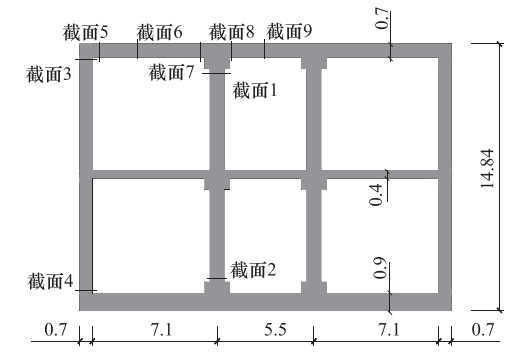
 下载:
下载:
